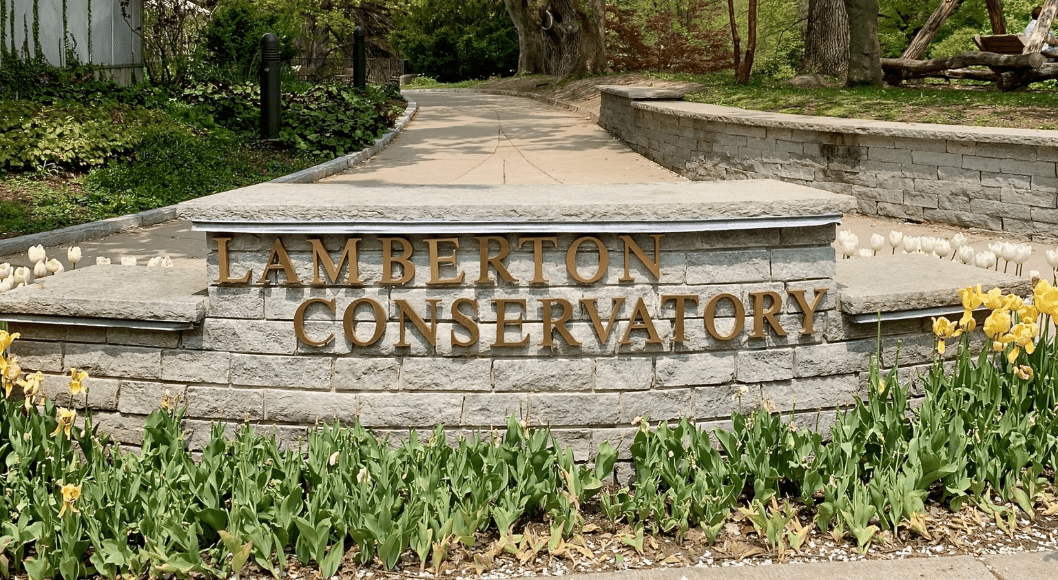
Spending the day at the Lamberton Conservatory is a great way to slow down and appreciate a piece of Rochester’s history. The Lamberton Conservatory was originally built in 1911 as a part of Highland Park. Highland Park was Rochester’s first public park and remains a favorite in the area. I took my children for a visit recently. Here is my experience to help you prepare for a great day there.
Parking: The Lamberton Conservatory does not have a designated parking lot, but there are spaces carved out along the side of the road in front of the Conservatory for parking, including a couple of handicap-accessible spaces. When we visited, the famed lilacs of Highland Park were in full bloom and the crowds had arrived. We had to drive a bit down the road and parallel park, but it was a beautiful day and we appreciated the scenic walk down the sidewalks.
Public Transportation: RTS has a nearby stop at the corner of South and Reservoir. From there, the walk to the Lamberton Conservatory is about 3 minutes.

The Entrance: The building has a large greenhouse structure with an old entrance on the front, however, the current main entrance is behind the Lamberton Conservatory sign and around the back right (northeast) side of the building. There you will find the doors tucked into a corner. There are no stairs to get from the main road into the building.
Visitor’s Center: We entered the building and found benches, a fish tank with turtles, and a front desk with an employee who was kind and willing to answer all of my questions. They accept cash or cards to pay for the entrance fee. Behind us, next to the Highland Park Little Free Library, were the drinking fountains and handicap-accessible bathrooms (no changing tables). Beyond them was a door to a small courtyard with seating where my children enjoyed watching the koi fish.
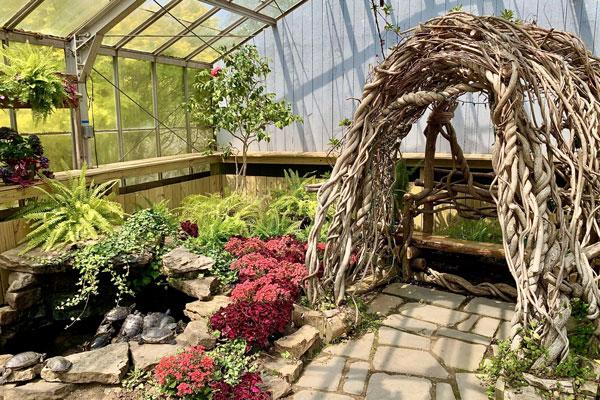
Inside the Lamberton Conservatory: As we entered the greenhouses, the warming light of the sun shone through the glass panes and the gentle smell of flowers greeted us. Noelle Nagel, the Horticultural Interpreter present on weekdays, was standing by and answered our questions with humor, showing patience as my little ones were eager to see the sights.
We worked our way through the five connected greenhouses, delighted in being surrounded by dense flora. My girls especially enjoyed peeking through the leaves in search of the turtles, tortoises, and quails that wander about.
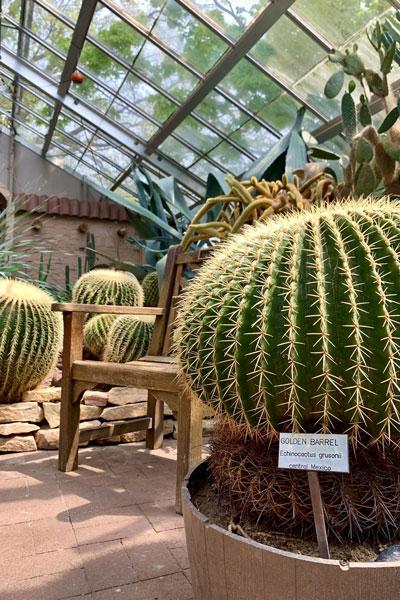
The occasional hum of fans or the trickling of fountains made the warm environment cozy and peaceful. The brick path through the greenhouses had no steps but was very slightly uneven in some places.
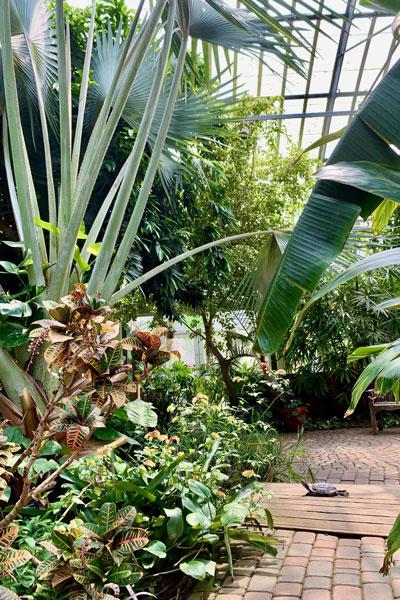
In the greenhouses, we spotted plants we recognized from home, science lessons, and documentaries. Our favorites included the orchids, hibiscus, bismarck palm, and golden barrel cacti. Some plants had labels and a few plaques or notes were posted with information. Each greenhouse had a different theme or ecosystem: the Seasonal Display House, the Epiphytes, Orchids, Ferns, and Exotics House, the Tropical Dome, the Desert Environment, and the Houseplant and Economics Area. There were plenty of picturesque spaces and benches along the path to rest. Some spaces had colorful lights to create a magical ambiance during the darker hours.
It took us about 30 minutes to meander through the greenhouses the first time. By the end, my children were so inspired that they wanted to circle through again. We noticed even more hidden plants and took some moments to sit and enjoy our surroundings. The hour we spent there was calm and manageable. The other patrons came in a slow, but steady flow, giving us ample space and time to explore at our own pace.
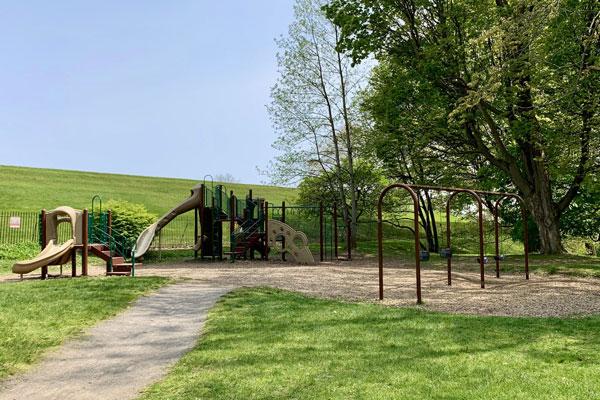
Playground: We wandered across the street to a modest playground, which was just what my energetic little ones needed. There were swings and structures for both big kids and toddlers, and a tree with low branches to explore.
Related Educational Suggestions:
-Study parks designed by America’s first landscape architect, Frederick Law Olmsted
-Bring a book about quails, turtles, or tortoises to read together
-Bring a plant encyclopedia (or app) to learn about the species in the greenhouses (including orchids, epiphytes, palms, desert plants from the African and American continents, succulents, and insectivorous plants)
-Exercise with a walk or jog around the paved paths of the park
-Bring a camera, art supplies, or nature journal to capture the flora and fauna
-Observe the structure of the greenhouse and create a miniature replica to use at home
-Plan a guided tour for an educational group
Additional Information: I recommend visiting the Lamberton Conservatory at different times of the year since the plants bloom and go dormant seasonally, and the displays change. There is a little something there to intrigue everyone. They have guided tours for groups at a discounted rate and volunteer opportunities to care for the outdoor landscape for those looking to get involved. Their website has additional information to help you plan your visit and learn more about the history of the Conservatory.















